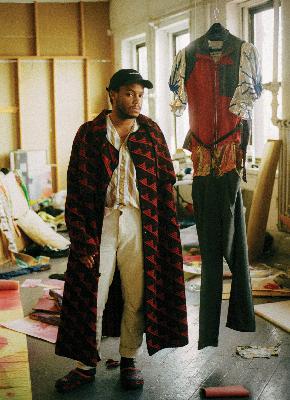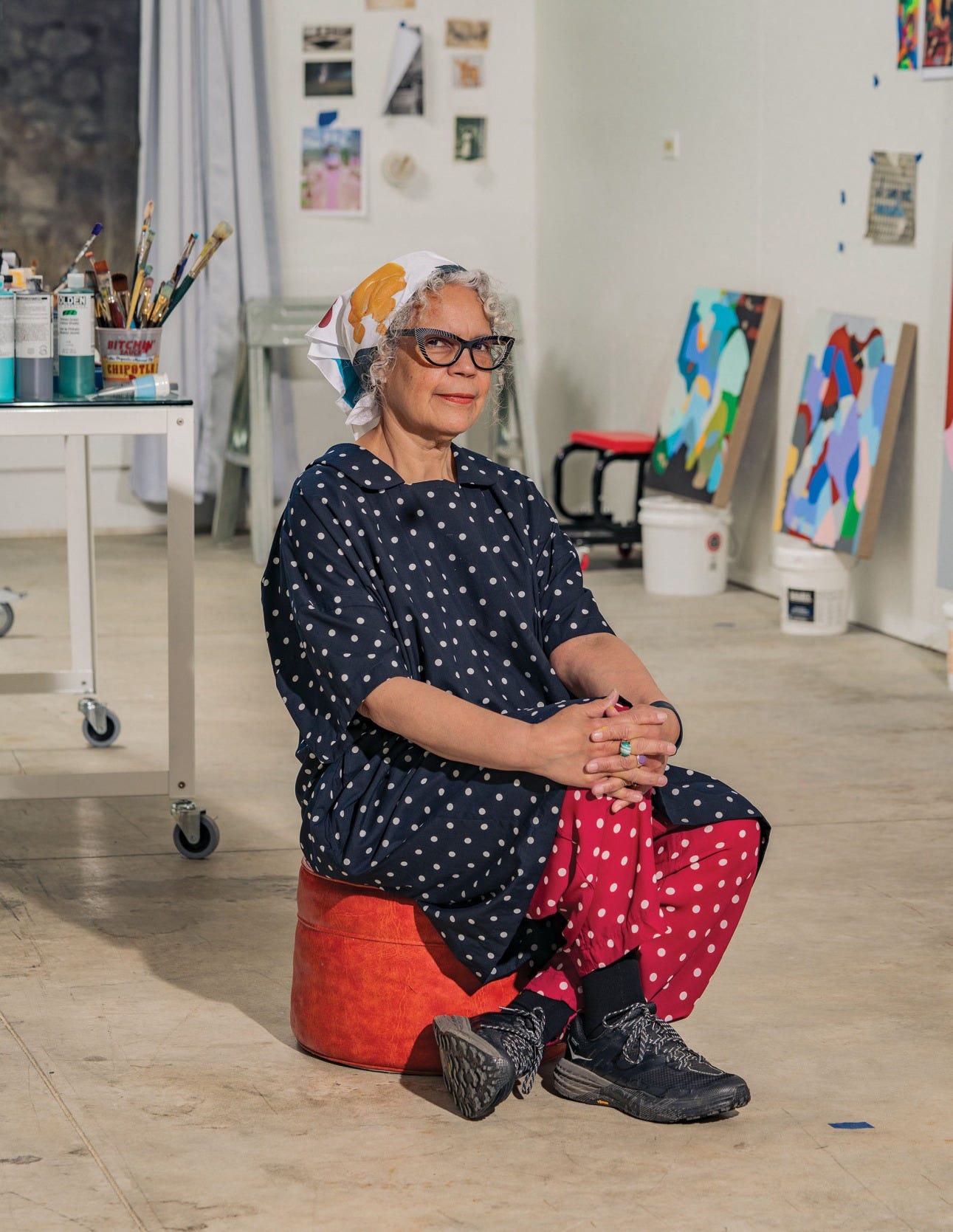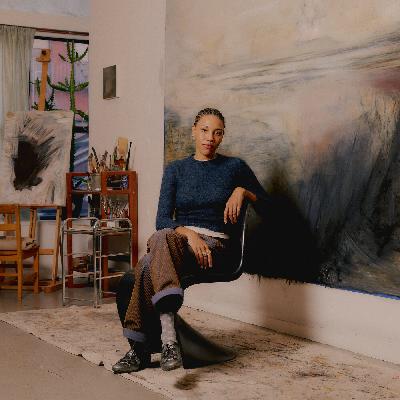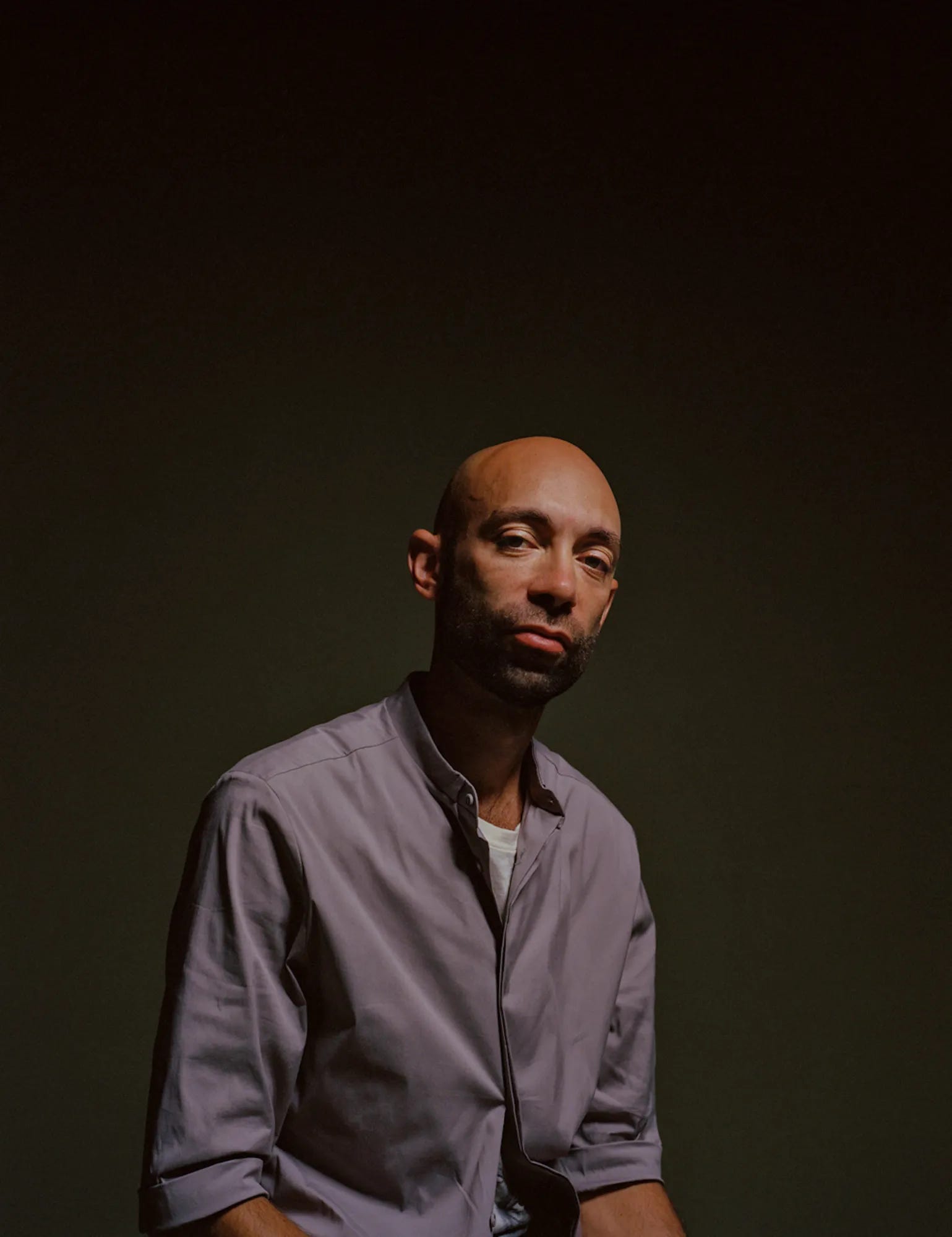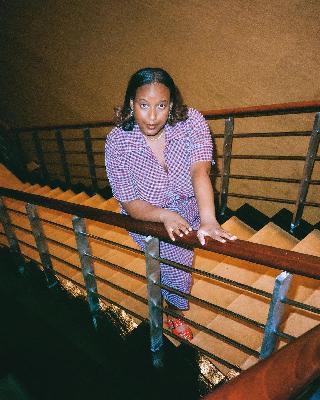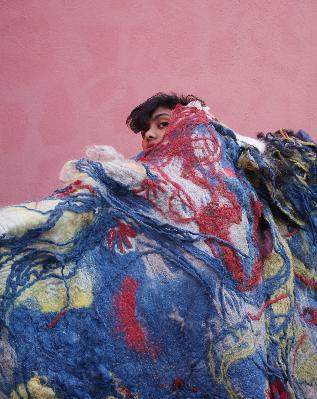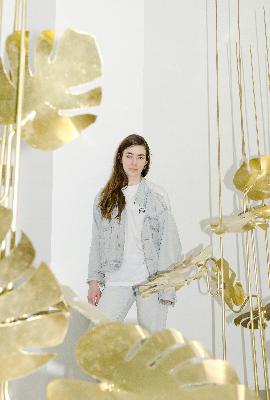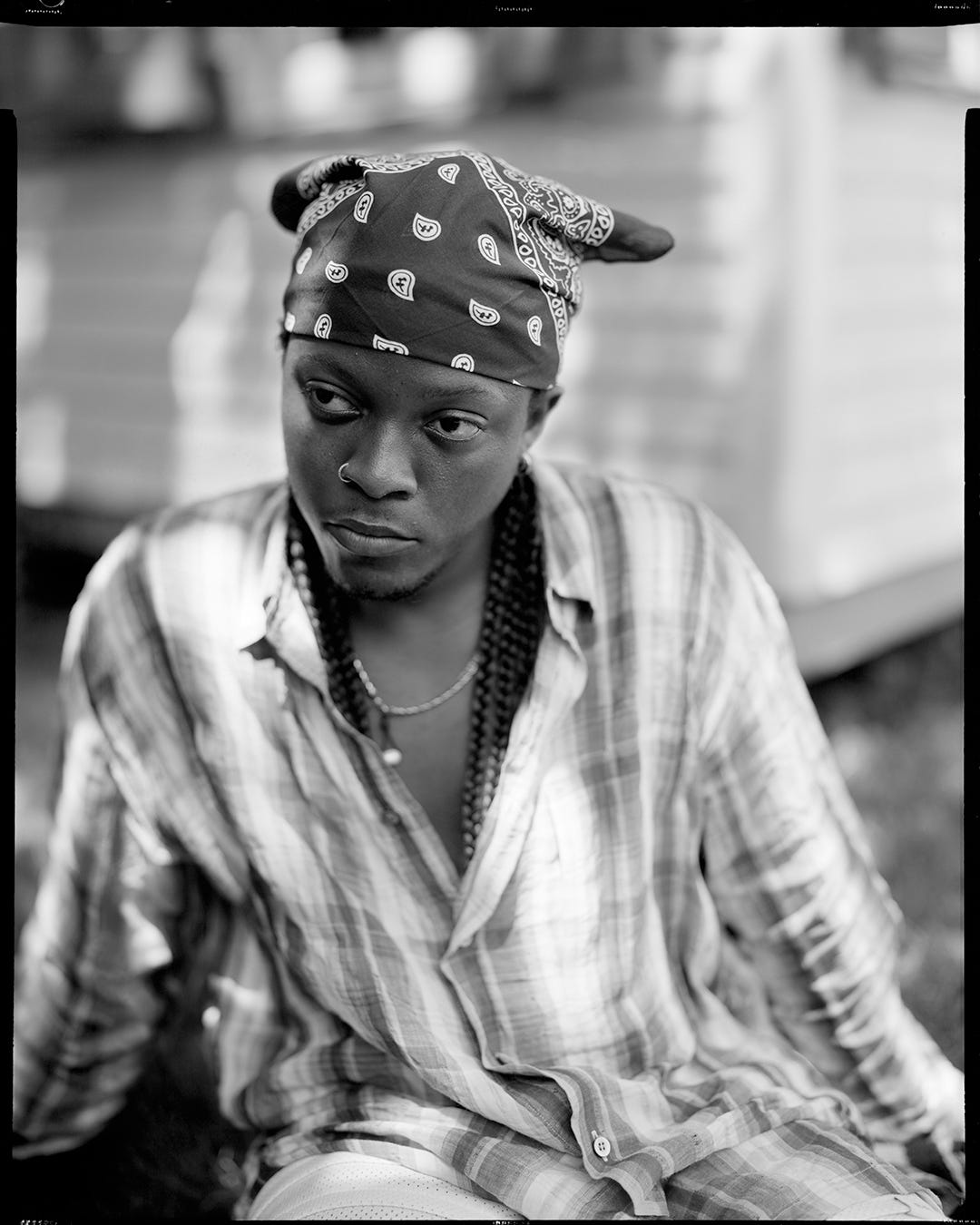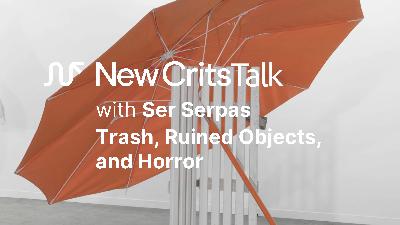Saints, Stained Glass, and the Work of Belief: NewCrits Talk with Raúl de Nieves
Description
He builds worlds from devotion, labor, and light. Raúl de Nieves on myth, death, and the joy of transformation.
Raúl de Nieves is a multidisciplinary artist whose practice spans sculpture, performance, stained glass, and music. His work merges ancestral craft with queer exuberance, creating ecstatic spaces where life, death, and rebirth coexist. Known for his intricate beaded sculptures and radiant installations, de Nieves transforms discarded materials into devotional objects that question permanence, value, and faith.
He reflects on:
* Why failure and fear are essential teachers
* How myth, labor, and ritual shape his understanding of transformation
* The link between spirituality and psychedelia in his creative process
* The politics of beauty, excess, and craft
* How performance and collaboration sustain his practice
* The tension between art and commerce—and what it means to say yes
* Why joy, respect, and self-love remain his most radical tools
(0:00 ) Welcome + Intro (1:00 ) The Origin of “St. George and the Dragon”(10:00 ) Death, Culture, and Safety(21:00 ) Excess, Labor, and the Ephemeral (31:00 ) The Whitney Window (35:00 ) The Carousel and the Brand (43:00 ) Pact with the Devil (47:00 ) Celebration and Decay (53:00 ) Belief and Legacy (56:00 ) Joy, Respect, and The Smashing Pumpkins
Follow Raúl: Web: https://companygallery.us/artists/raul-de-nievesInstagram: @norauls
Full Transcript
Ajay Kurian: Hi everybody, thank you all for being here. Welcome to our NewCrits Talk with Raúl de Nieves! I’m gonna give you some background as to what NewCrits is, I’m gonna give you a little introduction to Raúl, and then we’re gonna get into the conversation.
NewCrits is a global platform rooted in aesthetic education. We’re committed to fostering critical care, rigorous inquiry, and artist-to-artist dialogue. We offer mentorship and courses that challenge the assumptions of traditional art institutions while honoring the intensity of their best methods. We have crits, but we don’t think about crits as a way to tear you down to build you up. That’s trauma we don’t need anymore. Our offerings are designed for artists at any stage, especially those seeking meaningful critique, rooted in trust, discernment, and deep attention. These talks are an instantiation of that.
The way that I think about art will be on display. This kind of conversation is the kind of conversations that we have in crits. It’s one where we’re building together.
Now let’s get to the main event, which is Raúl here.
Raúl de Nieves: Hello everyone.
Ajay Kurian: All right, we’re gonna start with this image. I’ve known Raúl for some time now, but we really got to know each other better during the 2017 Whitney Biennial, which we were both in. We were both also part of the five artists that were asked to collaborate with Tiffany and Company.
So we were spending a lot of time together and it was really nice. Raúl is one of those artists where you can’t tell if the art is an extension of him, or he’s an extension of the art. There’s a purity and transparency to who he is as a person and an artist, that feels free of shame and free of hiding.
You’ll see the dark and the light. He’s joy and sparkle at times, but he can access a banshee scream and speak from unknown deaths as he does in his band Hairbone. Dark and light, life and death, are not seen as mere opposites in his work. They are a faded coupling, archetypes, and fantasma characters emerge throughout his sculptures as if enacting scenes from forgotten religious books, rituals, and beat through much of the work in ways that give them new life. There’s plenty of art that looks to religions, but few works of art inject a new spirit into that old fist to open it up.
Raúl has a new exhibition at Pioneer Works that just recently opened. The space is wide and gleaming with colors pouring through the windows. He’s created new stained glass works for the windows of the entire building. They’re modestly made with tape and colored plastic, but the effect is regal. The colors almost tune a frequency that makes you smile. So when you see texts that might be darker, more bodily, even a little gross, you accept this as part of the light too. Nothing’s left out. Everything feels redeemed.
After spending so much time seeing how Raúl creates, thinks and cares, I was and am convinced that this person is a star. Not a star in the sense of celebrity, although there is that, but in the sense that he radiates with an unflinching and holistic energy as if he simply is a star. I think it’s easy for us to see someone like Raúl whose light shines brightly and think that’s just who he is, that it’s not the result of enormous amounts of work and discipline of the ability to bring death to an old self in order to birth a new one and find joy again and again.
A person like that right now is worth talking to and hearing their stories. So please help me welcome Raúl.
Raúl de Nieves: Thank you. That was very nice.
Ajay Kurian: How are you feeling?
Raúl de Nieves: I feel great. Today was a lovely day and being here is so nice. To be able to talk to you and share a moment of my life and just some of the things that mattered to me. So thank you for having me.
Ajay Kurian: It’s really a pleasure. It’s an honor. I have loved your work, I’ve loved seeing it and I love learning more about it. This image was one that came up when I was reading about the work. I’ve seen this story told many times in your work, but this is from 2003 to 2005. This is a story of St. George and the Dragon, and I wanted to start here ‘cause I think there’s a lot of things that are formative in this particular image, the story itself and how you saw that story.
Raúl de Nieves: I moved to San Francisco in 2002 to attend the CCA college. And unfortunately, I wasn’t able to take into the school because of the financial situation that I was in. So it’s really nice to know that you are providing mentorship to students, because there wasn’t anything like that in 2002. The internet was just starting and moving to San Francisco was such a dream of mine and I made it happen even though I didn’t end up going to the school. For me, the bridge of San Francisco, which always shined so much to a forgotten soul or this idea of the hippie, the queers, gay culture. It really attracted me to this idea of knowledge. But once I couldn’t attend the school, I had to find my own mentorships, and I saw that through my friends.
The image of St. George and the dragon appeared to me through a woman who was selling embroidery at the store that I was working at. I ended up buying the embroidery off her and I started to really think about how I grew up in a religious household that spoke about angels and the defeat of the self. But in a more Catholic way, where you have to repent your sins and think about what it means to not follow the status quo of a normal way of thinking because heaven is the ultimate power of our existence. St. George, to me, became this mantra. I started to really ask myself who I was in the picture, and I decided to think that I was all aspects of this fable.
The fable talks about a dragon that houses itself next to a water well, and the town is in fear that this dragon is gonna drink all their water. So they must gather their beans into a sacrifice because the dragon ate all the animals. As if the dragon shouldn’t eat the animals because the humans are eating the animals. I don’t think that the saint really exists in the image because that is up to the future to decide.
So in a sense, I thought about some of the people in my life that I felt had that idea of themselves. Not going to school gave me an opportunity to seek these kinds of icons or lessons through things that appeared to me and I frantically started painting this painting over and over and over again. My goal was to paint 50 of them. I still haven’t painted 50, but once I moved to New York, it’s almost like the image faded away somehow. But it’s something I constantly go back to, and when I recognize it through my journeys, it reminds me of finding things to reflect on.
Ajay Kurian: The part where you say that you can be every single character in the fable is what stands out to me because there’s the dragon or the snake, there’s St. George, and then there’s the townspeople that are afraid. There’s this sense that St. George is banishing the dragon, and there’s a sense that people think it’s a dragon but really it’s just this snake and it’s not that big of a deal. They’re afraid of this thing that maybe they shouldn’t be afraid of. To be able to embody the people that are violent and fearful, to embody the saint who comes to save the day, and then to embody this dragon figure is a lot to think about, especially right now.
I wonder, can you still embody all those positions or do you feel like you have a different kind of sense of self right now?
Raúl de Nieves: I definitely can. I think fear is man’s best friend as they say, and sometimes we really have to get to know our fears in order to understand what they look like.
It’s one of the hardest things that we can allow ourselves to communicate with. Because sometimes that comes with a tragic death, addiction, or just being alive. I thought about this and the fact that this dragon was portrayed as the entity of the end of life. A dragon is essentially a mythical creature, so this idea of the myth or the flamboyant also became what I was thinking about. I was like, oh there is a fear of the other sid


